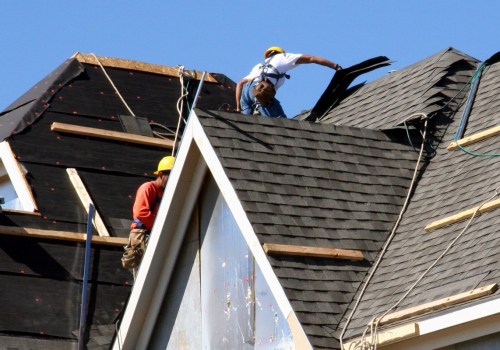However, you don't want to leave it exposed to the elements for more than a few days or it could get damaged. The good news is that roofing felt can get wet. Behmer Roofing & Sheet Metal explains that this is an essential part of roofing felt design in the first place. This felt is designed to add another layer of waterproofing to your roof to protect your home from damage caused by rain, snow and moisture.
Fortunately, roofing felt can get wet and still maintain its integrity. However, because it is designed to repel water and not absorb it, it can break down if it stays damp for too long, so you need to have time to dry. Too much sunlight can also cause the roofing felt to break, so it is not very suitable for very humid or very dry climates. Roofing felt gives your roof a better look and will help it last longer.
Felt helps ensure water drains from the roof after a storm. Helps keep the roof free of moisture, which can lead to leaks, rot and mildew. The felt also serves as a protective membrane against ice or snow accumulations. The felt paper has been on the roof for about 4 days, but our contractor says it doesn't look like the shingles are on for another week or so.
Today it rained heavily and the felt and OSB on the roof got soaked, should I worry about this or not? AUNT. The felt that rains no matter how well it is held (IMO) will have bubbles, it helps to let it dry before roofing, but there will be bubbles. Could the subfloor protect the roof when it rains? Yes, at least a couple of days. The subfloor is installed in a very similar way to the tiles themselves.
We overlap the edges to make sure that every centimeter of the roof is covered. But it's not enough to endure a whole winter. Roofing felt, also known as tar paper or underlayment, is used to protect the roof from perception. Getting wet is not a problem in small doses.
However, prolonged exposure, longer than three days, can compromise the roofing felt and cause it to crumple or break. This property helps you provide additional protection against water, which is one of the reasons why it is an important part of a roofing system. While shingles do the heavy lifting, if water finds its way under a shingle, the waterproof underlayer is there to protect the bottom deck. You may have never heard it before, but here in Vancouver the roofing season only lasts 8 months, while the other 4 months it rains.
Usually, a day or two in the rain will not damage the roofing felt too much, but moderation is needed. The base of the roof can be left uncovered for short periods, but it must still be completely dry before you can add shingles on top. If your roofing felt is wet than it is probably in a good place, however, if it is crumpled or broken, it is cause for concern. If you have a low-slope roof, your roofer may need to use roofing felt adhesive to bond several layers of roofing felt together or to secure sections that overlap.
In addition, the manufacturer's instructions should indicate which side of the roofing felt goes down, if that is important for the specific product. Essentially, the structure of a roof using felt will be first the shingles on top, secondly the felt, and then third the felt on top of the structure itself. Divide your roof area by the area of the felt rolls you plan to use and leave 10% more waste. Give your next roof extra protection with roofing felt, which adds a layer to help keep water away from the structure.
Roofing felt is an important intermediate layer between the layers of shingles and plywood that form your roof. While roofers workers are fixing shingles to the roof, roofing felt creates a safer layer for them to work on, helping to make them less likely to slip. You don't want to be sitting on your shattered roof while watching YouTube tutorials and wondering what to do next. .



